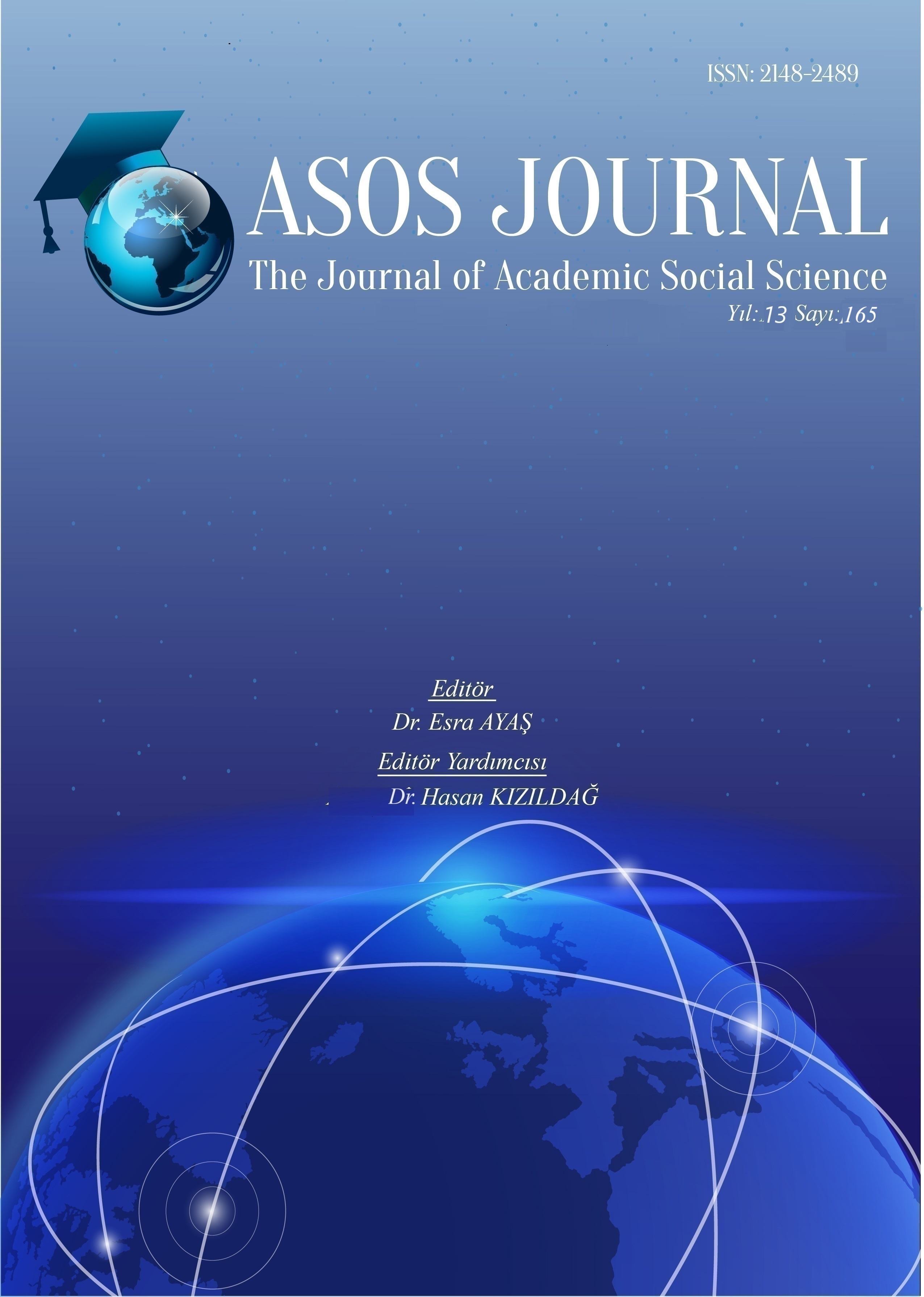Author :
Abstract
Durak, Türk mûsikîsinin unutulmaya başlayan dînî formları arasında yer almaktadır. On yedinci asırdan itibaren tekkelerde kurulan tasavvuf meclislerinin en fazla rağbet gören formlarından olan durak, başta III. Selim, Dede Efendi ve Zekâî Dede gibi pek çok bestekâr tarafından bestelenmiştir. Tekkelerin kapatılması bu formun unutulmasına sebebiyet veren en önemli etkenler arasında yer almasına karşın Suphi Ezgi ve Saadeddin Arel gibi teorisyen ve bestekârların yapmış oldukları besteler formun canlılığını korumasına olanak sağlamıştır. Çalışmada eseri makam ve form açısından analiz edilen Hüseyin Saadeddin Arel 20. Yüzyılın en önemli teorisyen, bestekâr ve müzikologlarındandır. Özgün bir bestecilik üslûbuna sahip olan bestekârın eserlerindeki form zenginliği dikkat çekicidir. Durak, Mevlevî Âyini, Taksim, Beste, Saz Semâîsi, Peşrev, Köçekçe, Oyun Havası, Semâî, Gazel, Şarkı, Marş gibi formlarda beş yüzden fazla eser besteleyen Arel’in özellikle içerisinde barındırdığı zengin makam ve geçki çeşitliliği ile dînî mûsikî formlarından Durak formuna olan yapısal ve makamsal yaklaşımının irdelenmesi, geçmişten günümüze formun yapısında meydana gelen değişimin incelenmesi çalışmanın amacını oluşturmaktadır. Araştırmanın konusu hem durak formunun yapısal özelliklerinin hem de içerisinde kullanılan dörtlü, beşli ve geçkilerin tespiti açısından önem arz etmektedir. Çalışmada nitel araştırma yöntemleri arasında yer alan içerik analizi yöntemi kullanılmış olup konuya ilişkin veriler kitap, dergi, makale ve nota arşivlerinden tarama (survey) yöntemi ile toplanmıştır. Araştırmanın sonucunda, eser içerisinde kullanılan puandorgların geleneksel (serbest usullü) durakların izlerini yansıttığı belirlenmiş ayrıca eserde Uşşak makamı içerisinde yer almayan Sabâ, Bûselik, Nihâvend gibi dörtlü beşli ve geçkilerin kullanıldığı tespit edilmiştir.
Keywords
Abstract
Durak is among the religious forms of Turkish music that are beginning to be forgotten. Durak, one of the most popular forms of Sufi gatherings established in dervish lodges since the seventeenth century, was composed by many composers and theorists, especially Selim III, Dede Efendi and Zekâî Dede. Although the closure of the lodges was among the most important factors that caused this form to be forgotten, the compositions made by theorists and composers such as Suphi Ezgi and Saadeddin Arel allowed the form to preserve its vitality. In the study, the song is analyzed in terms of maqam and form. Hüseyin Saadeddin Arel is one of the most important theorists, composers and musicologists of the 20th century. The variety of forms in the songs of the composer, who has an original compositional style, is remarkable. The aim of the study is to examine Arel's structural and maqam approach to the Durak form, one of the religious music forms, with its rich variety of maqams and passages, and to examine the changes in the structure of the form from past to present. He composed more than five hundred songs in forms such as Durak, Mevlevi Ayini, Taksim, Beste, Saz Semai, Peşrev, Köçekçe, Oyun Havası, Semai, Gazel, Şarkı, Marş. The subject of the research is important in terms of determining both the structural features of the Durak form and the quatrains, quintets and modulations used in it. In the study, content analysis method, one of the qualitative research methods, was used and the data related to the subject were collected from book, journal, article and note archives by survey method. As a result of the research, it was determined that the puandorgs used in the Durak reflect the traces of traditional (free-style) Duraks, and it was also determined that the Durak used quatrains and quintets such as Sabâ, Bûselik, Nihâvend, which are not included in the Uşşak maqam.





